Beyerdynamic TG 1000 Handleiding
Beyerdynamic
Microfoon
TG 1000
Bekijk gratis de handleiding van Beyerdynamic TG 1000 (48 pagina’s), behorend tot de categorie Microfoon. Deze gids werd als nuttig beoordeeld door 56 mensen en kreeg gemiddeld 3.5 sterren uit 28.5 reviews. Heb je een vraag over Beyerdynamic TG 1000 of wil je andere gebruikers van dit product iets vragen? Stel een vraag
Pagina 1/48

TG 1000
DIGITAL WIRELESS SYSTEM
OPERATING INSTRUCTIONS

TG 1000 – Contents 2
1. Safety Instructions . . . . . . . . . . . . . . . . . . . . . . . . . . . . . . . . . . . . . . . . . . . . . . . . . . . . . . . . . . . . . . . . . . . . . Page 3
1.1 TG 1000 Receiver . . . . . . . . . . . . . . . . . . . . . . . . . . . . . . . . . . . . . . . . . . . . . . . . . . . . . . . . . . . . . . Page 3
1.2 TG 1000 Handheld and Beltpack Transmitters . . . . . . . . . . . . . . . . . . . . . . . . . . . . . . . . . . . . . . . . . Page 4
1.3 NiMH Rechargeable Batteries, Alkaline Batteries. . . . . . . . . . . . . . . . . . . . . . . . . . . . . . . . . . . . . . . . Page 4
1.4 Disposal . . . . . . . . . . . . . . . . . . . . . . . . . . . . . . . . . . . . . . . . . . . . . . . . . . . . . . . . . . . . . . . . . . . . . . Page 4
2. Digital TG 1000 UHF Diversity Receiver . . . . . . . . . . . . . . . . . . . . . . . . . . . . . . . . . . . . . . . . . . . . . . . . . . . . . Page 5
2.1 Controls and Indicators . . . . . . . . . . . . . . . . . . . . . . . . . . . . . . . . . . . . . . . . . . . . . . . . . . . . . . . . . . Page 5
2.2 How to Lock the Buttons of the Receiver . . . . . . . . . . . . . . . . . . . . . . . . . . . . . . . . . . . . . . . . . . . . . Page 5
2.3 How to Connect the Antennae . . . . . . . . . . . . . . . . . . . . . . . . . . . . . . . . . . . . . . . . . . . . . . . . . . . . Page 6
2.4 How to Connect and Install Remote Antennae. . . . . . . . . . . . . . . . . . . . . . . . . . . . . . . . . . . . . . . . . Page 6
2.5 Mounting and Connection. . . . . . . . . . . . . . . . . . . . . . . . . . . . . . . . . . . . . . . . . . . . . . . . . . . . . . . . Page 7
2.5.1 Where to Place the Receiver . . . . . . . . . . . . . . . . . . . . . . . . . . . . . . . . . . . . . . . . . . . . . . . . . Page 7
2.5.2 Rack Mounting. . . . . . . . . . . . . . . . . . . . . . . . . . . . . . . . . . . . . . . . . . . . . . . . . . . . . . . . . . . Page 7
2.5.3 How to Connect the Receiver to a Microphone Input . . . . . . . . . . . . . . . . . . . . . . . . . . . . . . Page 7
2.5.4 How to Connect the Receiver to the Mains / Disconnect from the Mains . . . . . . . . . . . . . . . Page 7
2.6 Setting up . . . . . . . . . . . . . . . . . . . . . . . . . . . . . . . . . . . . . . . . . . . . . . . . . . . . . . . . . . . . . . . . . . . . Page 8
2.6.1 How to Operate the Receiver . . . . . . . . . . . . . . . . . . . . . . . . . . . . . . . . . . . . . . . . . . . . . . . . Page 8
2.7 Menu Settings . . . . . . . . . . . . . . . . . . . . . . . . . . . . . . . . . . . . . . . . . . . . . . . . . . . . . . . . . . . . . . . . . Page 9
2.8 Function Settings . . . . . . . . . . . . . . . . . . . . . . . . . . . . . . . . . . . . . . . . . . . . . . . . . . . . . . . . . . . . . . . Page 17
2.8.1 How to Connect a Receiver to a Network . . . . . . . . . . . . . . . . . . . . . . . . . . . . . . . . . . . . . . . Page 17
2.8.2 Dante™ Audio Network . . . . . . . . . . . . . . . . . . . . . . . . . . . . . . . . . . . . . . . . . . . . . . . . . . . . Page 20
2.8.3 How to Set the Brightness of the Display . . . . . . . . . . . . . . . . . . . . . . . . . . . . . . . . . . . . . . . Page 21
2.8.4 Settings for the Receiver Display . . . . . . . . . . . . . . . . . . . . . . . . . . . . . . . . . . . . . . . . . . . . . . Page 21
2.8.5 Factory Reset . . . . . . . . . . . . . . . . . . . . . . . . . . . . . . . . . . . . . . . . . . . . . . . . . . . . . . . . . . . . Page 22
2.8.6 How to Display the Version and Region Code . . . . . . . . . . . . . . . . . . . . . . . . . . . . . . . . . . . . Page 22
2.8.7 How to Update the Firmware of the Receiver . . . . . . . . . . . . . . . . . . . . . . . . . . . . . . . . . . . . Page 23
2.8.8 How to Update the Firmware of the Transmitter . . . . . . . . . . . . . . . . . . . . . . . . . . . . . . . . . . Page 23
2.9 Monitoring . . . . . . . . . . . . . . . . . . . . . . . . . . . . . . . . . . . . . . . . . . . . . . . . . . . . . . . . . . . . . . . . . . . Page 24
2.10 Synchronisation . . . . . . . . . . . . . . . . . . . . . . . . . . . . . . . . . . . . . . . . . . . . . . . . . . . . . . . . . . . . . . . . Page 25
2.11 Multi-Channel Operation (Cascading Several TG 1000 Receivers) . . . . . . . . . . . . . . . . . . . . . . . . . . . Page 25
3. Chameleon Software. . . . . . . . . . . . . . . . . . . . . . . . . . . . . . . . . . . . . . . . . . . . . . . . . . . . . . . . . . . . . . . . . . . Page 26
4. WA-AS 6 Antenna Splitter . . . . . . . . . . . . . . . . . . . . . . . . . . . . . . . . . . . . . . . . . . . . . . . . . . . . . . . . . . . . . . . Page 30
4.1 Controls and Indicators . . . . . . . . . . . . . . . . . . . . . . . . . . . . . . . . . . . . . . . . . . . . . . . . . . . . . . . . . . Page 30
4.2 General Information . . . . . . . . . . . . . . . . . . . . . . . . . . . . . . . . . . . . . . . . . . . . . . . . . . . . . . . . . . . . Page 30
4.3 Mounting and Installation . . . . . . . . . . . . . . . . . . . . . . . . . . . . . . . . . . . . . . . . . . . . . . . . . . . . . . . . Page 31
5. Digital TG 1000 UHF Handheld Transmitter . . . . . . . . . . . . . . . . . . . . . . . . . . . . . . . . . . . . . . . . . . . . . . . . . . Page 32
5.1 Controls and Indicators . . . . . . . . . . . . . . . . . . . . . . . . . . . . . . . . . . . . . . . . . . . . . . . . . . . . . . . . . . Page 32
5.2 How to Attach the Microphone Head . . . . . . . . . . . . . . . . . . . . . . . . . . . . . . . . . . . . . . . . . . . . . . . Page 33
5.3 How to Insert the Batteries . . . . . . . . . . . . . . . . . . . . . . . . . . . . . . . . . . . . . . . . . . . . . . . . . . . . . . . Page 35
5.4 How to Operate the Handheld Transmitter. . . . . . . . . . . . . . . . . . . . . . . . . . . . . . . . . . . . . . . . . . . . Page 36
5.5 Synchronisation / How to Transmit the Receiving Frequency to the Transmitter . . . . . . . . . . . . . . . . . Page 36
5.6 Maintenance . . . . . . . . . . . . . . . . . . . . . . . . . . . . . . . . . . . . . . . . . . . . . . . . . . . . . . . . . . . . . . . . . . Page 37
6. Digital TG 1000 UHF Beltpack Transmitter . . . . . . . . . . . . . . . . . . . . . . . . . . . . . . . . . . . . . . . . . . . . . . . . . . . Page 38
6.1 Controls and Indicators . . . . . . . . . . . . . . . . . . . . . . . . . . . . . . . . . . . . . . . . . . . . . . . . . . . . . . . . . . Page 38
6.2 How to Insert the Batteries . . . . . . . . . . . . . . . . . . . . . . . . . . . . . . . . . . . . . . . . . . . . . . . . . . . . . . . Page 39
6.3 How to Operate the Beltpack Transmitter. . . . . . . . . . . . . . . . . . . . . . . . . . . . . . . . . . . . . . . . . . . . . Page 39
6.4 Synchronisation / How to Transmit the Receiving Frequency to the Transmitter . . . . . . . . . . . . . . . . . Page 40
6.5 How to Use the Gain Switch . . . . . . . . . . . . . . . . . . . . . . . . . . . . . . . . . . . . . . . . . . . . . . . . . . . . . . Page 40
6.6 How to Mount the Belt Clip. . . . . . . . . . . . . . . . . . . . . . . . . . . . . . . . . . . . . . . . . . . . . . . . . . . . . . . Page 40
7. General Instructions for all Transmitters . . . . . . . . . . . . . . . . . . . . . . . . . . . . . . . . . . . . . . . . . . . . . . . . . . . . . Page 41
8. Comments on the Audio Level . . . . . . . . . . . . . . . . . . . . . . . . . . . . . . . . . . . . . . . . . . . . . . . . . . . . . . . . . . . Page 41
9. Components . . . . . . . . . . . . . . . . . . . . . . . . . . . . . . . . . . . . . . . . . . . . . . . . . . . . . . . . . . . . . . . . . . . . . . . . . Page 43
10. Accessories . . . . . . . . . . . . . . . . . . . . . . . . . . . . . . . . . . . . . . . . . . . . . . . . . . . . . . . . . . . . . . . . . . . . . . . . . . Page 43
11. Technical Specifications . . . . . . . . . . . . . . . . . . . . . . . . . . . . . . . . . . . . . . . . . . . . . . . . . . . . . . . . . . . . . . . . . Page 44
12. Service . . . . . . . . . . . . . . . . . . . . . . . . . . . . . . . . . . . . . . . . . . . . . . . . . . . . . . . . . . . . . . . . . . . . . . . . . . . . . Page 46
13. Licensing . . . . . . . . . . . . . . . . . . . . . . . . . . . . . . . . . . . . . . . . . . . . . . . . . . . . . . . . . . . . . . . . . . . . . . . . . . . . Page 46
14. Simplified EU declaration of conformity . . . . . . . . . . . . . . . . . . . . . . . . . . . . . . . . . . . . . . . . . . . . . . . . . . . . . Page 46
FCC Regulation . . . . . . . . . . . . . . . . . . . . . . . . . . . . . . . . . . . . . . . . . . . . . . . . . . . . . . . . . . . . . . . . . . . . . . . . . . . Page 47

TG 1000 – Safety Instructions 3
Thank you for selecting the TG 1000 wireless system from
beyerdynamic. Please take some time to read carefully through this
manual before setting up the equipment.
Due to the hugh switching bandwidth of 319 MHz (470 - 789 MHz) the
TG 1000 can be used worldwide and represents a long-term
investment. The system is extremely flexible and can be used for
professional audio applications, touring or for installations.
As a real digital wireless system the TG 1000 operates with a 24 bit
frequency shift keying. Both the transmitter and receiver communicate
digitally in the UHF range which ensures high reliability and exceptional
audio quality.
A digital encryption prevents unauthorised listening. The “Triple Play”
CODEC is the heart of the TG 1000 system. CODEC is an internal soft-
ware to encode and decode a digital data signal. Instead of a standard
CODEC a proprietary solution has been found for the TG 1000 system,
the so-called “Triple Play” CODEC, which has a low latency of 1.2 ms
(important when using multiple digital devices) and is characterised by
a high fault resistance, which ensures an improved RF coverage and
excellent audio quality.
The unique “Genuine Guitar” technology of the TG 1000 provides a
clear guitar sound. Since low frequencies can be processed up to 20
Hz, the TG 1000 is ideal for bass guitars.
The range is more than 300 meters and a dynamic range of 128 dB
provides an excellent signal-to-noise ratio.
Due to the embedded Web server the “Chameleon” software
communicates with all devices such as PC, laptop, tablet, smartphone,
etc. and is compatible with all operating systems based on Windows,
Mac, Linux, iOS, Android, etc..
The receivers can be cascaded so that multi-channel systems can be
realised with up to 12 channels and no additional antenna splitters.
Ergonomic handheld and beltpack transmitters complete the system.
Sophisticated battery solutions provide a quick battery change.
The TG 1000 system consist of the following components:
• Digital two-channel UHF diversity receiver
• Digital handheld transmitter
• Digital beltpack transmitter
1. Safety Instructions
General
• READ these instructions.
• KEEP these instructions.
• HEED all warnings.
Exemption from liability
• beyerdynamic GmbH & Co. KG will not be liable if any damage,
injury or accident occurs due to negligent, incorrect or inappropriate
operation of the product.
1.1 TG 1000 Receiver
1. Read these instructions.
2. Keep these instructions.
3. Heed all warnings.
4. Follow all instructions.
5. Do not use this apparatus near water.
6. Clean only with dry cloth.
7. Do not block any ventilation openings. Install in accordance with
the manufacturer’s instructions.
8. Do not install near any heat sources such as radiators, heat
registers, stoves, or other apparatus (including amplifiers) that
produce heat.
9. Do not defeat the safety purpose of the polarized or grounding-
type plug. A polarized plug has two blades with one wider than
the other. A grounding type plug has two blades and a third
grounding prong. The wide blade or the third prong are provided
for your safety. If the provided plug does not fit into your outlet,
consult an electrician for replacement of the obsolete outlet.
10. Protect the power cord from being walked on or pinched
particularly at plugs, convenience receptacles, and the point
where they exit from the apparatus.
11. Only use attachments/accessories specified by the manufacturer.
12. Use only with the cart, stand, tripod, bracket, or table specified by
the manufacturer, or sold with the apparatus. When a cart is used,
use caution when moving the cart/apparatus combination to
avoid injury from tip-over.
13. Unplug this apparatus during lightning storms or when unused
for long periods of time.
14. Refer all servicing to qualified service personnel. Servicing is
required when the apparatus has been damaged in any way, such
as power supply cord or plug is damaged, liquid has been spilled
or objects have fallen into the apparatus, the apparatus has been
exposed to rain or moisture, does not operate normally, or has
been dropped.
Location
• The equipment must be set up so that the mains switch, mains plug
and all connections on the rear of the device are easily accessible.
• If you transport the equipment to another location take care to
ensure that it is adequately secured and can never be damaged by
being dropped or by impacts on the equipment.
Fire hazard
• Never place naked flames (e.g. candles) near the equipment.
Humidity / heat sources
• Never expose the equipment to rain or a high level of humidity. For
this reason do not install it in the immediate vicinity of swimming
pools, showers, damp basement rooms or other areas with unusually
high atmospheric humidity.
• Never place objects containing liquid (e.g. vases or drinking glasses)
on the equipment. Liquids in the equipment could cause a short
circuit.
• Do not install near any heat sources such as radiators, heat registers,
stoves or other apparatus (including amplifiers) that produce heat.
Connection
• The equipment must be connected to a mains socket that has an
earth contact.
• Protect the power cord from being walked on or pinched
particularly at plugs, convenience receptacles, and the point where
they exit from the apparatus.
• Lay all connection cables so that they do not present a trip hazard.
• Whenever working on the inputs and outputs of the equipment
switch off power.
• Check whether the connection figures comply with the existing
mains supply. Serious damage could occur due to connecting the
system to the wrong power supply. An incorrect mains voltage
could damage the equipment or cause an electric shock.
• Please note that different operating voltages require the use of
different types of power cable and plugs.
The lightning flash within an equilateral triangle is
intended to alert the user to the presence of uninsulated
dangerous voltage within the device that may be
sufficient enough to constitute a risk of electric shock to
users.
The exclamation mark within an equilateral triangle is
intended to alert the user to the presence of important
operating and maintenance instructions in the literature
accompanying the product.
Product specificaties
| Merk: | Beyerdynamic |
| Categorie: | Microfoon |
| Model: | TG 1000 |
Heb je hulp nodig?
Als je hulp nodig hebt met Beyerdynamic TG 1000 stel dan hieronder een vraag en andere gebruikers zullen je antwoorden
Handleiding Microfoon Beyerdynamic

9 Juli 2023

9 Juli 2023

9 Juli 2023

9 Juli 2023

9 Juli 2023

9 Juli 2023

9 Juli 2023

9 Juli 2023

8 Juli 2023
Handleiding Microfoon
- QTX
- Prodipe
- Purple Panda
- DOCKIN
- Aston
- Boss
- Auna
- Nuance
- Antelope
- Miktek
- Ambient
- Fluid
- Behringer
- Pure Acoustics
- United
Nieuwste handleidingen voor Microfoon
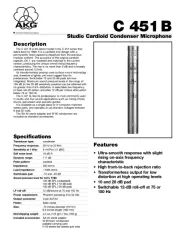
2 Augustus 2025

29 Juli 2025

29 Juli 2025
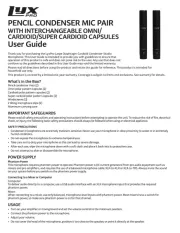
29 Juli 2025

29 Juli 2025
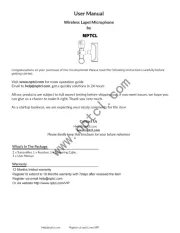
28 Juli 2025
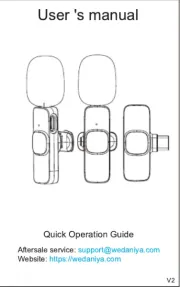
28 Juli 2025
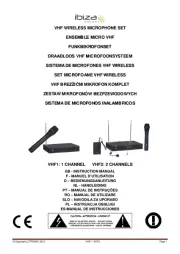
28 Juli 2025
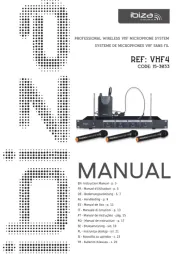
28 Juli 2025
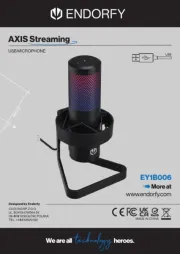
23 Juli 2025
